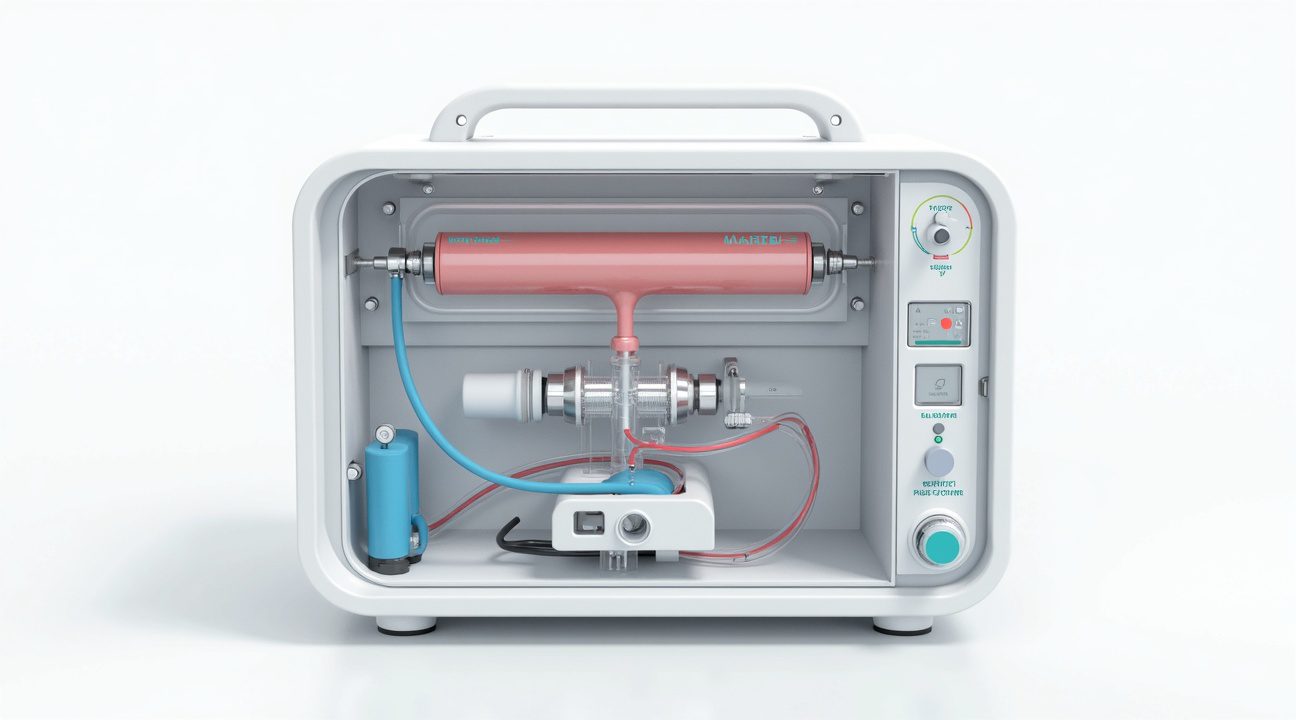Seventeen-year-old Anya Pogharian from Montreal made headlines by transforming kidney care accessibility—creating a functional dialysis machine for just $500 as part of a high school science project.
Revolutionizing Healthcare Accessibility
Traditional dialysis machines, priced around $30,000, are unaffordable for many healthcare systems and patients, particularly in developing countries. Anya’s low-cost innovation addresses this challenge directly. Her motivation stemmed from her volunteer work in hospitals, where she witnessed firsthand the struggles dialysis patients face. Her determination sparked a powerful idea—what if she could create an affordable yet functional dialysis machine?
Global Recognition and Growth
The prototype gained widespread acclaim in the scientific community. The project was submitted to international competitions and received notable attention.
- Dramatic cost reduction: Anya’s machine costs only $500 to build, vastly cheaper than conventional $30,000 models.
- International recognition: Her work was showcased in the Google Science Fair and earned a bronze medal at a national Canadian science fair.
- Professional development opportunity: She received a prestigious summer internship offer from Héma-Québec to further develop her prototype.
- Global impact potential: The innovation can provide lifesaving treatment options in countries where up to 90% of kidney patients lack access to dialysis due to cost.
- Core functionality maintained: Despite its affordability, the machine uses essential mechanisms like peristaltic pumps and proper filtration to mirror hospital-grade functionality.
Future Implications
Anya Pogharian’s project demonstrates the power of youth-led innovation to resolve real-world healthcare challenges. Her continued research and development could significantly influence medical outcomes for underserved populations globally. Projects like hers showcase the transformative potential of education, compassion, and determination.
Canadian Teen Builds Life-Saving Dialysis Machine for Just $500
Seventeen-year-old Anya Pogharian from Montreal has created a groundbreaking achievement that could revolutionize kidney care accessibility. This Canadian Armenian teenager developed a functional dialysis machine as her school project, demonstrating remarkable ingenuity and compassion for patients suffering from kidney disease.
The Inspiration Behind the Innovation
Pogharian’s motivation came from her volunteer work at a hospital dialysis unit, where she witnessed firsthand the struggles patients face accessing regular dialysis treatments. Many patients traveled long distances multiple times per week, enduring physical and financial hardships just to receive life-sustaining care. The experience opened her eyes to the urgent need for more accessible dialysis solutions, particularly for patients in remote areas or those with limited mobility.
Her observations revealed that traditional dialysis machines present significant barriers to patient care. The cost factor alone creates substantial challenges for healthcare systems and patients alike, while the size and complexity of conventional equipment limit treatment locations to specialized medical facilities.
Revolutionary Cost-Effective Design
Pogharian’s dialysis machine costs approximately $500 to construct, representing a dramatic cost reduction compared to standard dialysis equipment that typically costs around $30,000. This price difference makes home dialysis treatments potentially accessible to thousands more patients who currently struggle with transportation and scheduling challenges.
The innovative design focuses on essential dialysis functions while eliminating expensive components that don’t directly impact treatment effectiveness. Her approach demonstrates how young innovators tackle complex problems with fresh perspectives, often finding solutions that established industries overlook.
This cost-effective dialysis machine could particularly benefit patients in developing countries where access to expensive medical equipment remains limited. The reduced manufacturing costs could enable healthcare providers to offer dialysis treatments in smaller clinics and rural facilities, bringing life-saving care closer to patients’ homes.
Pogharian’s work exemplifies how student projects can address real-world healthcare challenges. Her machine maintains the core functionality needed for effective dialysis while dramatically reducing both equipment costs and treatment barriers. The project represents a significant step forward in making kidney care more accessible to patients worldwide.
The teenager’s innovation highlights the potential for young minds to contribute meaningful solutions to healthcare accessibility issues. Her dialysis machine design could inspire further research into simplified medical equipment that maintains effectiveness while reducing costs and complexity.

How the Low-Cost Machine Actually Works
The Canadian teen’s innovative dialysis machine operates on the same fundamental principles as hospital-grade equipment, but achieves this at a fraction of the cost through clever engineering choices. At its core, the device employs a peristaltic pump system to circulate blood through the filtration process, mimicking the precise fluid movement found in conventional hemodialysis machines.
Core Filtration Mechanism
The machine’s filtration process centers around the interaction between blood and dialysate fluid within a specialized chamber called a dialyzer. This dialysate fluid acts as the cleaning agent, drawing toxins and excess waste from the blood through a process of controlled chemical exchange. The system incorporates pressure and temperature sensors that continuously monitor these critical parameters, ensuring safe operation throughout the treatment cycle.
Blood and dialysate flow on opposite sides of semi-permeable membranes within the dialyzer, creating an environment where waste products naturally migrate from the blood into the dialysate solution. This transfer occurs through osmosis, where molecules move across the membrane barrier based on concentration gradients. Toxins that have built up in the bloodstream pass through these microscopic pores while essential blood components like red blood cells and proteins remain safely contained.
Technical Components and Innovation
The peristaltic pump design represents a particularly smart choice for this budget-conscious project. These pumps work by compressing flexible tubing in a rolling motion, moving fluid without direct contact between the pump mechanism and the blood. This approach eliminates contamination risks while maintaining the precise flow rates essential for effective dialysis.
Temperature regulation ensures the returning blood matches body temperature, preventing shock to the patient’s system. Pressure monitoring prevents dangerous buildups that could damage blood vessels or compromise the membrane integrity. The integration of these monitoring systems demonstrates how the teen successfully balanced safety requirements with cost constraints.
Similar to how other young innovators have achieved remarkable breakthroughs, like talented teenagers making waves in technology, this project showcases how creative problem-solving can produce life-changing results on a limited budget.
The machine’s effectiveness relies heavily on the proper balance of flow rates between blood and dialysate. Too fast, and the cleaning process becomes inefficient. Too slow, and treatment times extend beyond practical limits. The teen’s design achieves this balance through careful calibration of the pump speeds and membrane surface area, proving that sophisticated medical technology doesn’t always require massive financial investment.

International Recognition and Science Fair Success
Anya Pogharian’s innovative dialysis machine design caught the attention of judges and scientists across multiple prestigious competitions. Her groundbreaking project first gained recognition when she submitted it to the Google Science Fair in 2014, where it competed against thousands of other young innovators from around the globe.
The project’s impact extended beyond international competitions. At a Canadian science fair, Pogharian’s dialysis machine earned her a bronze medal, validating her innovative approach to making medical technology more accessible. This recognition from her home country’s scientific community demonstrated that her solution addressed real healthcare challenges that resonated with experts in the field.
Global Interest and International Requests
Following her success at these competitions, Pogharian began receiving attention from international communities worldwide. Several organizations and individuals from different countries reached out with requests for her machine, recognizing its potential to transform dialysis treatment in resource-limited settings. This global interest highlighted how her five-hundred-dollar solution could address healthcare accessibility issues that extend far beyond Canadian borders.
The international response validated what many young innovators experience when they create something truly impactful. Much like other remarkable young inventors who have gained recognition for their groundbreaking work, such as prodigious students making waves in technology, Pogharian’s project demonstrated that age doesn’t limit the potential for meaningful innovation.
Professional Development Opportunity
The recognition from her science fair success opened doors to professional development opportunities. Héma-Québec, Quebec’s blood and plasma collection agency, offered Pogharian a summer internship specifically focused on further developing her dialysis machine prototype. This internship represented a significant step in transitioning her school project from concept to potential real-world application.
Working with Héma-Québec provided Pogharian access to professional-grade equipment, experienced medical researchers, and the regulatory knowledge necessary to advance medical device development. The internship allowed her to refine her design while learning about the complex process of bringing medical innovations to market.
This collaboration between a teenage inventor and an established medical organization showcases how innovative thinking can bridge the gap between academic projects and practical healthcare solutions. The partnership demonstrated that sometimes the most creative solutions come from unexpected sources, including students working on school assignments who approach problems with fresh perspectives.
The success story mirrors other instances where young innovators have created remarkable solutions, similar to how creative minds have developed groundbreaking inventions that capture global attention. Pogharian’s achievement proves that significant medical advances can emerge from student projects when combined with proper support and recognition from established institutions.
Her bronze medal at the Canadian science fair and the subsequent internship with Héma-Québec created a pathway for continued innovation in medical technology. The recognition validated her approach to cost-effective healthcare solutions and provided the foundation for future development of accessible medical devices.
Addressing the Global Dialysis Crisis
The dialysis crisis extends far beyond developed nations, with developing countries bearing the heaviest burden of limited access to life-saving treatment. This Canadian teenager’s five-hundred-dollar dialysis machine represents more than just an impressive school project—it offers a potential pathway to address one of healthcare’s most pressing global challenges.
The Stark Reality of Limited Access
Nearly 90% of patients in some regions lack access to dialysis, creating a healthcare emergency that claims countless lives annually. Traditional dialysis machines cost tens of thousands of dollars, making them prohibitively expensive for healthcare systems in developing nations. Countries like India and Pakistan exemplify this crisis, where millions of kidney disease patients face certain death without access to affordable treatment options.
The financial barriers extend beyond equipment costs. Maintenance, trained technicians, and consistent power supply create additional obstacles that many healthcare facilities simply can’t overcome. Even when facilities exist, the cost per treatment session often exceeds what patients can afford, forcing impossible choices between medical care and basic survival needs.
Innovation as a Bridge to Accessibility
This teenage inventor’s approach demonstrates how innovative thinking can potentially bridge the accessibility gap that has persisted for decades. By reducing costs by over 95% compared to traditional machines, such solutions could transform dialysis from an exclusive treatment to an accessible one. The simplicity of design also addresses practical concerns about maintenance and operation in resource-limited settings.
Healthcare systems in developing countries could benefit from several key advantages of affordable dialysis technology:
- Reduced capital investment requirements allow more facilities to offer treatment
- Lower operational costs make sessions affordable for more patients
- Simplified maintenance reduces dependency on specialized technicians
- Smaller footprint allows installation in rural or space-constrained facilities
- Battery operation capability addresses power supply inconsistencies
The ripple effects of increased dialysis accessibility extend throughout entire communities. Families wouldn’t face financial ruin pursuing treatment, productive members of society could continue working, and healthcare resources could be allocated more efficiently. Just as we’ve seen with other innovative solutions like young inventors changing technology, breakthrough thinking often comes from unexpected sources.
Scaling such innovations requires careful consideration of regulatory approval, clinical validation, and manufacturing partnerships. However, the fundamental concept proves that cost-effective medical solutions don’t require compromising on effectiveness. Countries with established healthcare infrastructure could serve as testing grounds before expansion to regions with the greatest need.
The global health community has long recognized that sustainable solutions must be affordable, maintainable, and locally adaptable. This Canadian teen’s project embodies these principles while demonstrating that innovation doesn’t always emerge from corporate research labs or academic institutions. Sometimes the most practical solutions come from students who approach problems without preconceived limitations about what’s possible or impossible.
Emergency situations and humanitarian crises particularly highlight the need for portable, affordable dialysis options. Mobile units equipped with low-cost machines could reach remote populations or disaster-affected areas where traditional equipment would be impractical. The potential to save lives in situations where conventional dialysis simply isn’t available makes this innovation especially valuable.
Regional manufacturing partnerships could further reduce costs and create local employment opportunities while ensuring steady supply chains. Training programs for local technicians would build sustainable healthcare infrastructure rather than creating dependency on foreign expertise. The combination of affordable technology and local capacity building offers a comprehensive approach to addressing the dialysis crisis.
This project illustrates how individual creativity and determination can tackle global challenges that have stumped healthcare systems for years. While regulatory hurdles and clinical trials remain necessary steps, the fundamental breakthrough—proving that effective dialysis can be achieved at dramatically reduced costs—opens new possibilities for millions of patients worldwide who currently face limited options.

Sources:


